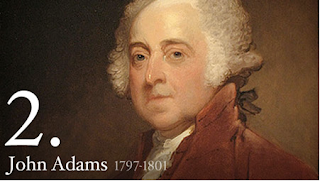Gordon-Reed, Annette. The Hemingses of Monticello: An American
Family. New York: W.W. Norton & Co., 2008. 798 ppg.
 |
| Sally Hemings? |
This was a
very well written book that clearly showed the meticulous research behind the
narrative. Gordon-Reed’s thesis was explained and correlated quite well. Once
again, we see where primary sources played a major role in correcting a misconception of history. In this case that misconception was in Thomas
Jefferson not taking a black slave as a mistress at some point following his
wife’s death. The evidence is overwhelming that he did, even after sorting
through what appeared to be an attempt to cover this fact up by his grandson. Gordon-Reed
made an extremely strong case for Sally Hemings to have been Jefferson’s
mistress.
 |
| Thomas Jefferson |
The most
striking thing about this book is that it is not really about Sally Hemings as
much as it is her family and the world they lived in. Obviously, Gordon-Reed
had to know a great amount of detail about Thomas Jefferson in order to explore
the role of the Hemings family in his life. She also relied on Peter Onuf to
examine what she wrote. Onuf was until his recent retirement the Thomas
Jefferson Memorial Foundation at the University of Virginia, the school founded
by Thomas Jefferson, and who arguably is the leading Jefferson expert in the
United States. In fact, Gordon-Reed’s research was peer reviewed by multiple
historians which definitely gave a lot of credence to her interpretation.
Gordon-Reed’s
real contribution to history with this book though comes with her detailed
explanation of slavery in America during the era described in the book. In
addition, she also explored slavery in France, particular Paris during the time
that James and Sally Hemings were there. It is in this exposition of American
life that this book really makes its mark. The story of Sally Hemings and
Thomas Jefferson became the story in which the relationship between slaves and
masters was examined. Theirs was not an aberration from social custom, but fully
in accord with accepted and well known practices of that time period.
Jefferson’s actions were certainly well in keeping with that of his neighbors
who knew perfectly well that Jefferson was keeping Sally Hemings as this
concubine.
 |
| Eston Hemings |
That he was
doing so was not a major secret in his life. James Callendar has announced it
to the nation during Jefferson’s presidency, but the issue failed to turn the
public against Jefferson mainly because it was either ignored or acknowledged
as the rule of the day. Gordon-Reed’s work clearly showed how Jefferson
continued to keep Sally Hemings at Monticello while all of that publicity
continued. Again, this was a very different world from the one we live in
today. The people of that time had their way of doing things and our
considerations were not in their minds.
 |
| Aerial View of Monticello |
The result
is a very good book that does far more than just explore the relationship
between Sally Hemings and Thomas Jefferson. It goes far beyond that in its
historical analysis of the era and actually shows us a quite vivid picture of
slavery in America. For Jefferson scholars, this book is a must read. For those
that wish to believe otherwise about this relationship, they will have to
ignore the massive amount of information which pretty much ends the speculation
about their relationship. For students of American slavery, they too should be
advised to read this book. It is quite illuminating in that area. Gordon-Reed
gets a very well deserved five star rating for this work.























